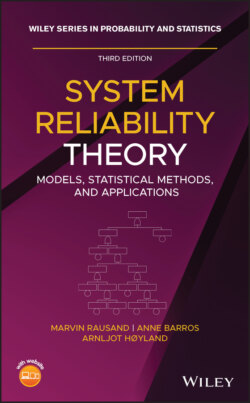Читать книгу System Reliability Theory - Marvin Rausand - Страница 91
2.5.6 SADT and IDEF 0
ОглавлениеA widely used approach to functional modeling was introduced by Douglas T. Ross of Sof Tech Inc. in 1973, called the structured analysis and design technique (SADT). The SADT approach is described, for example, in Lambert et al. (1999) and Marca and McGowan (2006). In the SADT diagram each functional block is modeled according to a structure of five main elements, as shown in Figure 2.3
Function. Definition of the function to be performed.
Inputs. The energy, materials, and information necessary to perform the function.
Controls. The controls and other elements that constrain or govern how the function is carried out.
Resources. The people, systems, facilities, or equipment necessary to carry out the function.
Outputs. The result of the function. The outputs are sometimes split in two parts; the wanted outputs from the function, and unwanted outputs.
The output of a functional block may be the input to another functional block, or may act as a control of another functional block. This way the functional blocks can be linked to become a functional block diagram. An illustration of an SADT diagram for subsea oil and gas stimulation is shown in Figure 2.5. The diagram was developed as part of a student project at NTNU (Ødegaard 2002).
Figure 2.5 SADT diagram for subsea oil and gas stimulation.
When constructing an SADT model, we use a top‐down approach as shown in Figure 2.6. The top level represents a required system function. The functions necessary to fulfill the system function are established as an SADT diagram at the next level. Each function on this level is then broken down to lower level functions, and so on, until the desired level of decomposition has been reached. The hierarchy is maintained via a numbering system that organizes parent and child diagrams.
Figure 2.6 Top‐down approach to establish an SADT model.
The functional block in Figure 2.3 is also used in the Integrated definition language (IDEF), which is based on SADT and developed for the US Air Force. IDEF is divided into several modules. The module for modeling of system functions is called IDEF 0 (e.g. see U.S. Air Force 1981; U.S. DoD 2001; Marca and McGowan 2006).
For new systems, SADT and IDEF 0 may be used to define the requirements and specify the functions and as a basis for suggesting a solution that meets the requirements and performs the functions. For existing systems, SADT and IDEF 0 can be used to analyze the functions the system performs and to record the mechanisms (means) by which these functions are accomplished.
